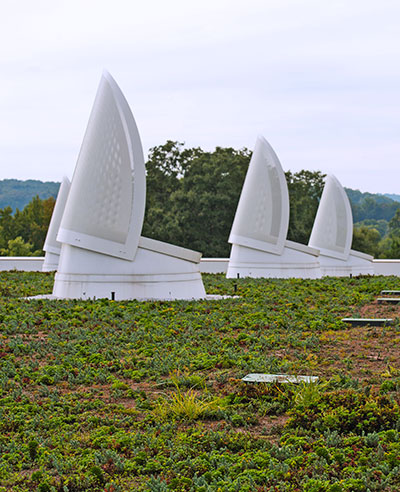Water Resources
Fluid Dynamics
The Fluid Mechanics and Water Resources research focus emphasizes the flow of common, natural fluids - water and air - the forces they create and the movement of materials - suspended or dissolved - within those fluids. The sub-disciplines of Civil Engineering encompassed within the Fluid Mechanics, and Water Resources program include hydraulics, hydrology, coastal engineering, and wind engineering. Research problems in Applied Fluid Mechanics cover a variety of scales, from the flow of groundwater through pores in soil to hydrodynamics of tidal estuaries and coastal seas.
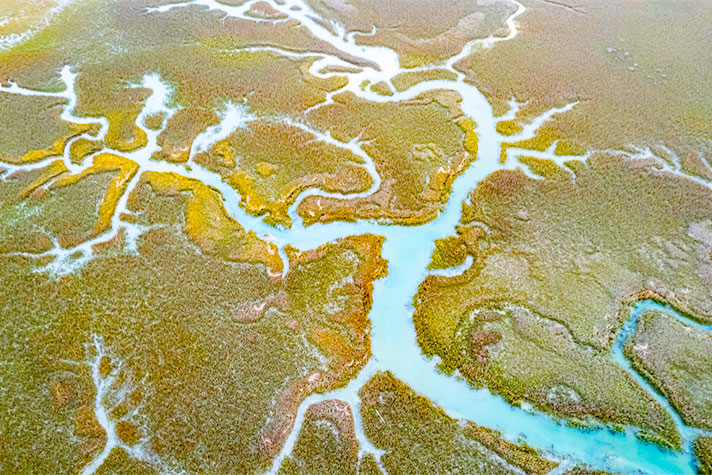
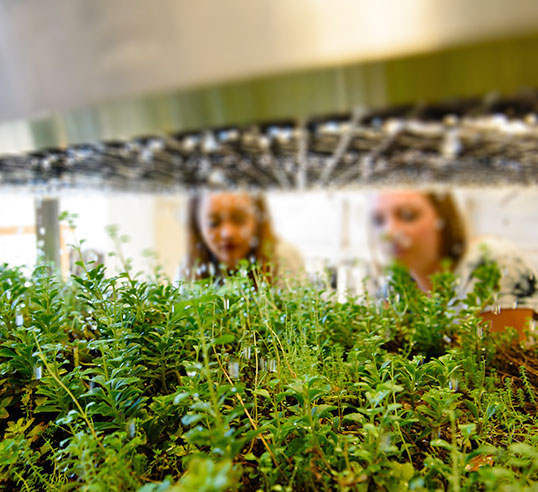
Graduate Studies
The Civil Engineering Department at Clemson University offers programs of advanced study in Fluid Mechanics and Water Resources, leading to the Master of Science, Master of Engineering, and Doctor of Philosophy degrees. Graduate students in the Applied Fluid Mechanics area have the opportunity to work with faculty on a wide range of academic, professional, and research activities, some of which are multi-disciplinary in nature and involve faculty from other departments in the College of Engineering, Computing and Applied Sciences.
Water Resources Research
The Clemson University Glenn Department of Civil Engineering conducts research on campus and off-site facilities. Lowry Hall is equipped with four teaching laboratories to foster hands-on exploration and analysis. Graduate students conduct research under the direction of a Civil Engineering faculty advisor.
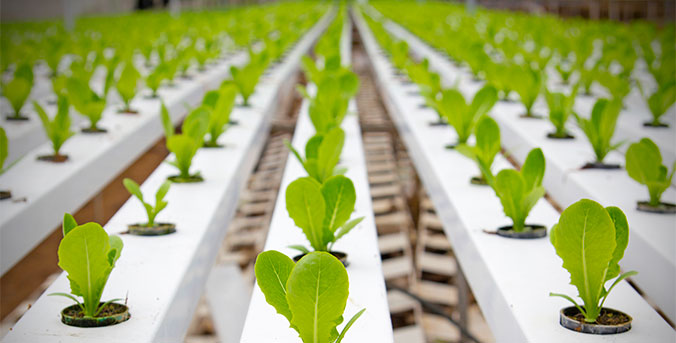
Slowing Runoff
Nigel Kaye and Will Martin, a former Ph.D. student, received an award for research focused on the ability of green roof systems to impact stormwater runoff from buildings. A green roof is covered with soil and plants watered with rainwater and controlled irrigation systems. This paper presents a new physics-based model for flow routing based on the green roof module geometry and soil properties, which requires only a single discharge coefficient to be measured. Clemson University’s campus hosts two green roofs, on Lee III and the Watt Family Innovation Center.
Researchers lay the groundwork to help predict future flash droughts so that measures can be taken to prevent or alleviate the effects.
“Nature is complicated, and there is no fun in solving simple things. The first thing we need to do is accept that this is happening. Once we accept it, the next step should be to mitigate or reduce the impact.”
Sourav MukherjeePostdoctoral Fellow
Developing Sustainable Solutions
Water resources engineers are under increased pressure to adapt to a changing climate and regulatory environment. From increased rainfall in wet areas, floods, drought, and saltwater encroachment from rising sea levels, researchers are using data to help predict future water availability.
-
Facilities
The Applied Fluid Mechanics program has two off-campus research facilities and an on-campus fluid mechanics laboratory. The Fluid Mechanics Laboratory is used for CE 3410 Introduction to Fluid Mechanics and is located in Room 30 Lowry Hall. Housed in the Fluid Mechanics lab are four portable experimental workbenches and equipment for a variety of larger experiments. The lab serves as both the undergraduate fluid mechanics teaching laboratory and a small research laboratory that includes a flume and a small wind tunnel.
The Clemson Hydraulics Laboratory (CHL)
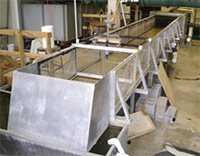 The Clemson Hydraulics Laboratory (CHL) is an off-campus research facility adjacent to Lake Hartwell and the University Walker golf course. It includes two buildings that are used for hydraulic physical model studies. An outdoor recirculating flume (100 ft by 4.5 ft by 4 ft) with a 30 ft3/s flow capability is used for larger-scale, two-dimensional studies. A variety of instrumentation is available, including electromagnetic and impeller-type current meters, surface-piercing wave gages, water samplers, pressure transducers, ADVs, etc.
The Clemson Hydraulics Laboratory (CHL) is an off-campus research facility adjacent to Lake Hartwell and the University Walker golf course. It includes two buildings that are used for hydraulic physical model studies. An outdoor recirculating flume (100 ft by 4.5 ft by 4 ft) with a 30 ft3/s flow capability is used for larger-scale, two-dimensional studies. A variety of instrumentation is available, including electromagnetic and impeller-type current meters, surface-piercing wave gages, water samplers, pressure transducers, ADVs, etc.An indoor flume is being constructed. The new flume will be 60-ft long with a cross-sectional area of 4 ft by 4 ft. This flume will have a recess in a section of the bed to allow for scour studies.
The Wind Load Test Facility (WLTF)
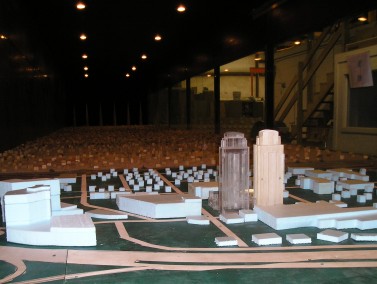 The Wind Load Test Facility is an off-campus research laboratory for wind engineering. This laboratory houses one of the nation's largest boundary layer wind tunnels as well as component testing equipment which is unique in the United States. Funded after Hurricane Hugo devastated parts of South Carolina, the facility is used for studies focusing on storm damage to low-rise buildings, such as houses or commercial buildings of three stories or less.
The Wind Load Test Facility is an off-campus research laboratory for wind engineering. This laboratory houses one of the nation's largest boundary layer wind tunnels as well as component testing equipment which is unique in the United States. Funded after Hurricane Hugo devastated parts of South Carolina, the facility is used for studies focusing on storm damage to low-rise buildings, such as houses or commercial buildings of three stories or less.The boundary layer wind tunnel at the Wind Load Test Facility can simulate winds close to the ground at a range of model scales. The wind tunnel can generate wind load time histories which can then be applied to full-scale test specimens. The wind tunnel facilities are complemented by a range of load testing machines and reaction frames, which allow structural components and systems to be tested.
-
Research
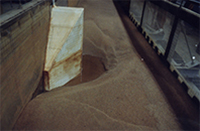 The general focus of the program is on the movement and behavior of surface and subsurface water and their interaction with each other and with natural and man-made conditions. In the applied fluid mechanics area, hydraulics and hydrology, turbulent fluid mechanics, coastal engineering, vortices in pump intake structures, sediment transport, hydraulic structures and energy losses, and contaminant transport can be studied in depth.
The general focus of the program is on the movement and behavior of surface and subsurface water and their interaction with each other and with natural and man-made conditions. In the applied fluid mechanics area, hydraulics and hydrology, turbulent fluid mechanics, coastal engineering, vortices in pump intake structures, sediment transport, hydraulic structures and energy losses, and contaminant transport can be studied in depth.Open-Channels and Sediment Transport. Turbulence and Turbulent Jets. Wave Mechanics. Coastal and Riverine Sediment Transport. Hydrologic Modeling. Hydraulic Structures. Physical Modeling. Experimental Investigations. Numerical Modeling. Field Studies.
Sample of Current and Recent Research Projects
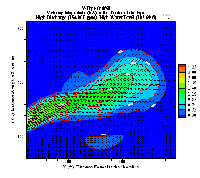
- Turbulent jets
- Reservoir sedimentation
- Coastal engineering
- Scour at bridge piers and abutments
- Sediment transport
- Rainfall distribution and frequency
- Lake evaporation
- Contaminant flux from contaminated sediments sites
- Modeling of channel confluences
- Modeling of air entrapment in vertical drop shafts
Sample Theses and Dissertations
- A Laboratory Study on Submerged Breakwaters
- Sediment Transport Upstream of Orifices
- Turbulence Models and the Behavior of Shear Flows
- Evaporation Estimation Using a Floating Pan
- Investigation of Flow Field Upstream of Orifices
- Subaqueous Contaminated Sediment Capping Design Effectiveness
- Numerical Model Studies of Turbulent Jets
- Numerical Modeling of Flow in Open Channel Confluences
- Dimensionless Rainfall Patterns for the Design of Hydraulic Structures
- Using Vaned-Grating Baskets to Reduce Pump Vibration
- Impact of Curtain Wall Placement in Pump Intakes
- Determination of Drag Force on Flexible Vegetation
- Flow Separation Downstream of Equal and Opposing Flow Junctions in Open Channels
- Rainfall Depth-Duration-Frequency Relationships for NC, SC, and GA
- Circular Intake Design For Solids Handling Pumps
- Determination and Variation of Discharge Coefficients for Hydraulic Sparger Design
- Development of a Design Procedure for Vaned-Grating Baskets to be used in Submerged Pump Remediation
- Evaluating the FHWA Guidelines for Abutment Scour in Relation to Scour under Natural Conditions
- Alternative Formed Suction Inlet
- Recommendations for Dimensioning Circular Pump Stations with Five Pumps
- Nearshore Wave and Current Measurements and Prediction: Folly Beach, South Carolina
- Longshore Sediment Transport along the South Carolina Coast
- Interstitial Pore Water Flux through Streambeds of Varying Composition
- Directional Spectral Water Wave Analysis including Mean Horizontal Current
- Bioturbation and Porewater Exchange in a Laboratory Flume
- Assessment of Leachate Generation Using the HELPQ Model
- Local Scour at Abutments under Simulated Hydrographs
- The Effects of Roughness Element Spacing on Boundary Layer Velocity Profiles and Pressure Distribution on a Cube.
- Calculation and Prediction of Longshore Sediment Transport Gradients and Application to Beach Nourishment Projects
- Estimation of Evaporative Losses due to Reservoir Construction
- Long-term Numerical Simulation of Morphology of Tidal Inlets
- An Evaluation of Two-Phase Flow Modeling of Suspended Sediment Transport
- Predicting Hydraulic Piping at Culverts
- Predicting Potential Flood Hazards at Embankment Crossings
- Wind Tunnel Study of Pressure Coefficients on Roof Corners
- Modeling and Assessment of Scour at Bridges
- Woody Debris Accumulation at Bridge Piers
- Effect of Reservoir Construction on the Hydrologic System of Lake Bowen, South Carolina
- Development of Model to Determine Hurricane Wind Speeds and Directions
- A Parametric Study of the Cross-Flow Turbine Performance
- A Hydrological Model for Routing Contaminants in Disposal Facilities
- Effect of Random Roughness Element Height in Wind Tunnel Simulation of Low Rise Structures
- Prediction of Evaporation Rates for Open Water Bodies
- Hydrologic Study of Catawba Lake System
- Establishment of Evaporation Rates for SC
- Evaluation of Stream Functions by Polynomial Approximation of Equipotential Lines
- A Model for Suspended Sediment Concentrations from Conservation Laws
- Multiple Dye Studies in a Tidal Creek,
- Groundwater Solute Transport Modeling Using a Three dimensional Scaled Model
- Application of the Vapor Budget Method for Measuring Evaporation at Savannah River Plant
- Sediment Transport in the Upper Flow Regime
- Modeling the Consolidation and Drying of Dredged Material
- Vapor Budget Measurement of Evaporation from Irrigated Surfaces
- Laboratory Investigation of Unsteady Axisymmetric Jets
- One dimensional Mathematical Thermal Hindcast Model
- Laboratory Investigation of Shoaling Patterns at Tidal Inlets
- Laboratory Investigation of Vertical Bulkheads
- Feasibility of Physical Modeling of Groundwater Leachates
- Efficiency of Highway Storm Water Inlets
- Analysis of a Desiccant Aided Evaporative Cooling System
- A New Method for Developing Entrainment Rate Models for Turbulent Flows and Its Application
- A New Vapor Budget Technique for Evaporation Measurement from Open Water Bodies
- Development of a Vapor Budget Method for Measurement of Evaporation
- Physical Hydraulic Models of Thermal Discharges
- Far Field Physical Models of Thermal Discharges
-
People
Nigel B. Kaye
Environmental Fluid Mechanics; Heat and Pollutant Transport in Buildings; Mixing in Stratified Flows; Buoyancy-Driven Shear Flows
Abdul A. Khan
Computational Hydrodynamics; Environmental Fluid Mechanics; Sediment Transport; Hydraulics and Hydrology
